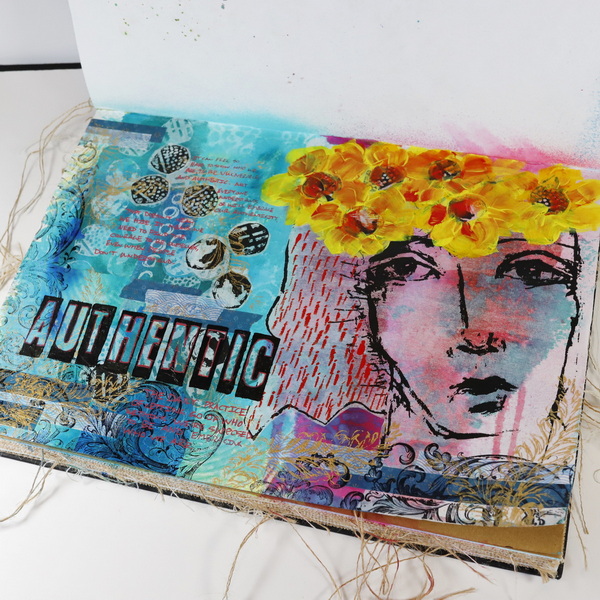
Art Journaling with Tissue Paper Collage
Tissue paper collage is a fun way to add layers and textures to your art journal pages. You can get a variety of printed tissue papers or purchase plain tissue paper to alter with inks, stamps and paints. The possibilities for tissue paper collage are endless and it’s a great way of personalizing your journal.
For today’s project and tutorial I am using Dina Wakley collage tissue paper. The papers are printed in both black and white which provides versatility on how you can apply them in your projects.
Why Use Tissue Paper?
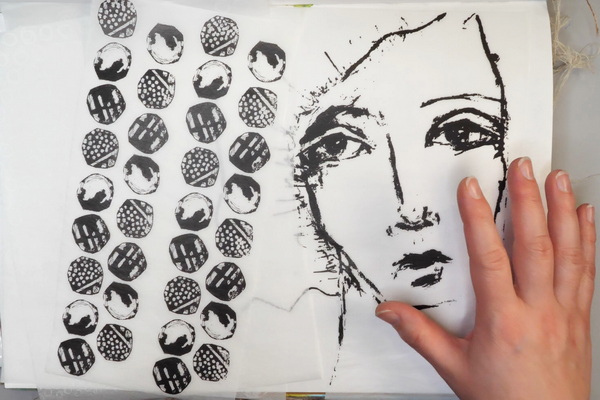
I love tissue paper collage because of the translucent quality of the medium. It can be layered beautifully on top of inks, paints and textures without eradicating the colors underneath. I also love the strength of the tissue paper. It can be altered with paint and ink before being added to the surface without it disintegrating.
Last week I shared how to use napkins in your art journal projects. Napkins and tissue paper may seem similar, but they have different properties when using them in your journal. The napkins are more delicate than the tissue paper. Because of this they can’t be altered with inks or paint before being added to the page. To see more about how to use napkins in your projects, click here.
Finding Intention in the Art Journal Page
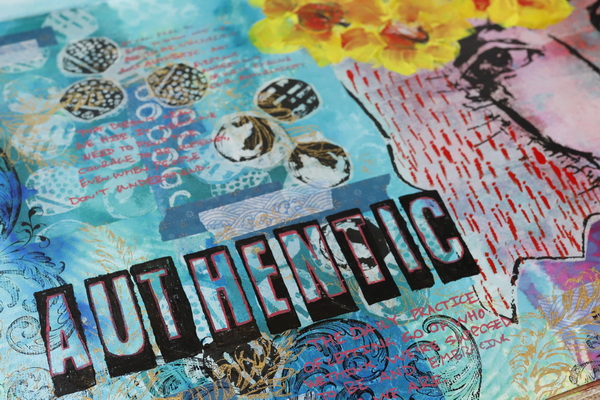
Today I wanted to share with you my intention behind this page. I love using my art supplies. The products and images are so inspiring! Though I find a deeper story gets expressed through the intuitive process of each page. Sometimes I don’t even know what that story is until I’m part of the way through creating the page.
Embracing Authenticity
This page was inspired by one of my favorite books, “The Gifts of Imperfection” by Brene Brown. Every time I read it, I learn something new about myself. The word that came to my mind when working on this page was “authenticity.”
Living authentically isn’t easy. Especially in the world of social media where we often compare ourselves to other people’s highlight reels. It may seem easier to put on the armour of perfection and “everything is ok” than admitting that perhaps we are struggling. Being authentic takes courage and vulnerability, which isn’t always easy.
What is Authenticity?
I love this definition of authenticity from Brene Brown:
Authenticity is the daily practice of letting go of who we think we’re supposed to be and embracing who we are.
Brene Brown
I love this definition because it’s something I really want to strive for in my own life. Being comfortable being myself and not apologizing for it.
It isn’t easy being authentic, but the idea of hiding who I am feels even worse. I am learning to cultivate the courage to be imperfect and owning that imperfection. This means I need to be willing to show vulnerability to others while still having good boundaries. I’ve realized that the people who really care about you will love you for your imperfections. By being authentic we can build connection and trust in our relationships.
I have also experienced the shaming and harsh words that come from people who do not embrace authenticity. It can be so hurtful and it takes courage not to be shamed back into “armouring up” and being inauthentic. Through these hurtful experiences I have learned that it often has less to do with you than the other person. They might be unkind and discouraging to you because they are uncomfortable with your authenticity.
In this art journal page, I wanted to journal my thoughts about authenticity and how I want to work on being more authentic in my life.
Tissue Paper Collage Art Journaling Page
Step 1: Altering Printed Tissue Paper
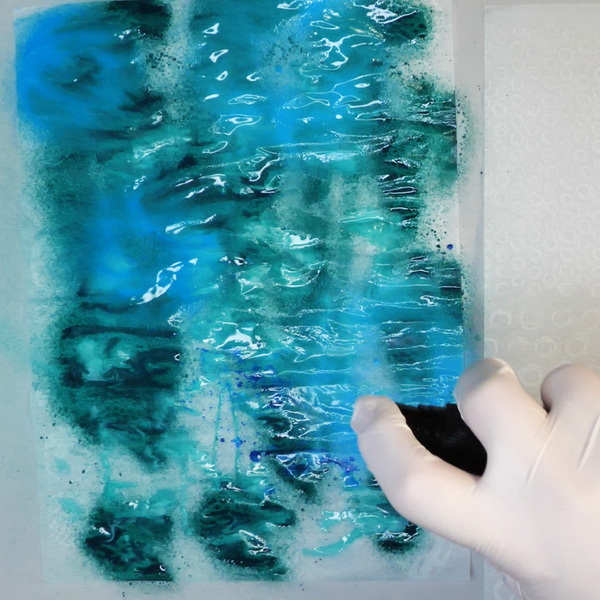
Altering printed tissue paper is a great way to color match tissue to your project. As the white tissue paper lacks contrast, I added color to the paper to create this contrast. Using a combination of spray paints and inks, spritz color onto the tissue paper surface.
You can also use acrylic paint and a brush for this step as the tissue paper is strong and won’t break. If you have too much paint on the surface, use a sheet of paper to make a print to remove the excess paint. Set aside to dry.
Step 2: Add Ink and Paint to the Art Journal Background
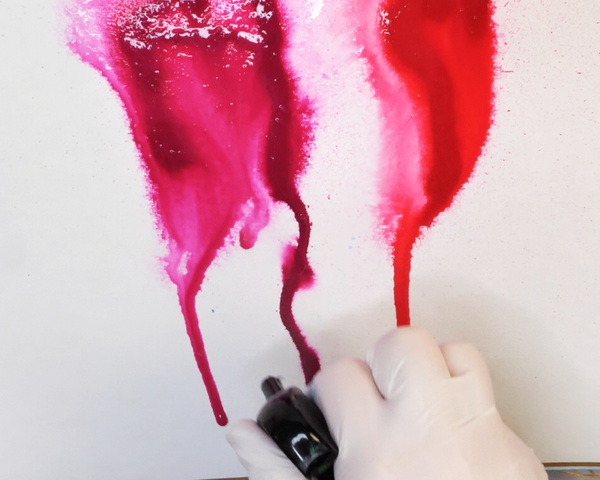
Using high flow acrylics and India inks, add drops of ink and paint to the top of your journal page. Use a spray bottle to move the paint down the page to cover the surface. For more details on this technique, visit this article 5 Art Journal Background Ideas Using Ink.
Step 3: Add Stencil Images to Art Journal Background

While the paint and inks are still wet, use Distress Oxide sprays to add stencil images to the background. As the Distress Oxides will react with the water on the page, this will cause a color shift to the inks. I like adding stencils on top of paint drips to create more pattern and color on the page.
Step 4: Add Tissue Paper to Art Journal

Add tissue paper onto the art journal page using Matte Medium. You can either cut your images with scissors or rip the tissue. Add matte medium to the surface with a brush, add the tissue paper and apply matte medium on top to seal it to the surface. When working with large pieces, like the face image, work in small areas.
Step 5: Painting Loose Acrylic Flowers
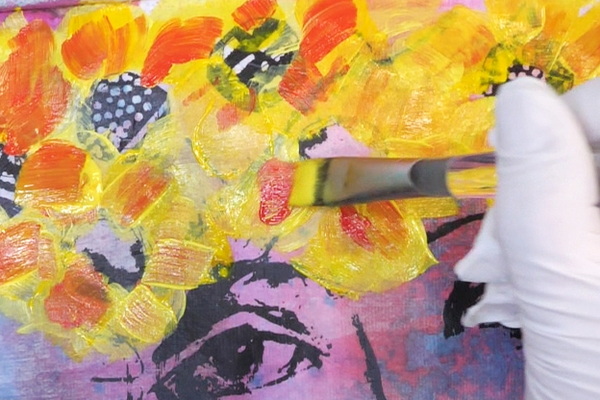
I like the girl that I added to the page, but I wanted to give her a flower crown. In the previous step I had added in tissue paper circles for the flower centers. Using a flat 1” brush and acrylic paint, paint the flower petals. For each petal, I used two strokes with the paint brush.
I started with Pebeo Lemon Cadmium Yellow Hue for the base color. To add brightness, try using a warmer color such as Golden Acrylics Hansa Yellow Medium. To create margins in the flower petals, use Cadmium Red Medium acrylic paint. If you find the red too strong, add highlights to the flowers with Hansa Yellow Light. By adding layers with the paint this creates depth and interest to the flowers. As the girl is done in a very sketchy style, the loosely painted flowers match that style.
Finish up the flowers by adding a touch of Cadmium Red paint to the tissue flower centers.
Step 6: Add Mark Making

To create color and pattern to her hair, I made marks using a ½” flat paint brush with Cadmium Red paint.
Step 7: Bringing Cohesion to the Page
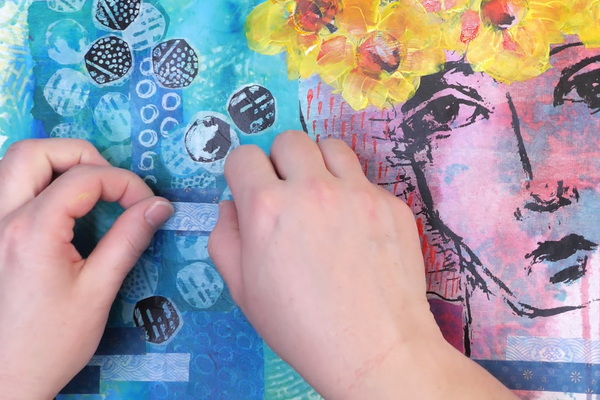
I loved the look of this page, but it felt like the left and right side of the page were not cohesive. To create cohesion, I added a few different materials and patterns.
Washi tape is a fun way to add color and texture to the page. Try adding it in random places in layers.
StazOn black ink and stamped images are a fun way to create borders and add texture and contrast to the page. Using the Stamper’s Anonymous Baroque stamp set I added images to the bottom and left-hand side of the page.
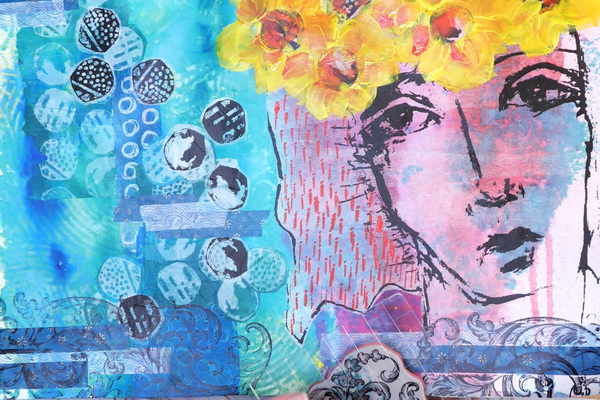
To make the black ink not just look like a border, I decided to add some highlights using gold paint and a leaf stamp. Stamp this image randomly on the page and over top of some of the tissue circles. All these elements together help bring cohesion to the page.

Step 8: Adding Words and Journaling
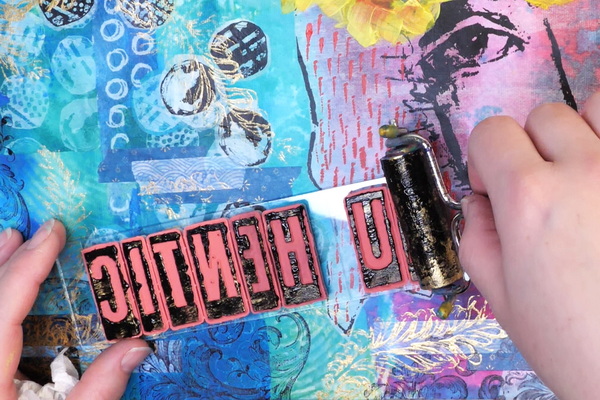
I stamped the word “authentic” on the page using Dina Wakley Block Alphas and black paint. If you want to learn more about this stamping technique, check out my article “Stamping Tips and Techniques.”
I didn’t get a great stamped image this time due to the unevenness of the surface. To correct this I used a paint pen to clean up the words and the edges. I also added outlining to the letters using a magenta paint pen.
Add your journaling onto the page using a paint pen. With the uneven mixed media surface, paint pens are the best tool for getting your journaling down on the page.
Questions?
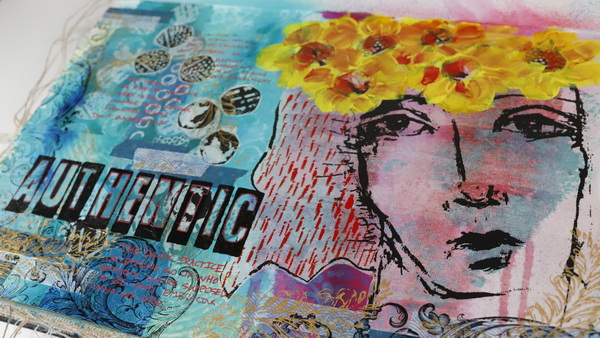
Any questions about this page or how to use printed tissue paper in your projects? I hope that this gives you some inspiration and confidence to try this technique. I would love to answer any questions that you might have. Please comment below or fill out the contact form, I would love to start a conversation with you! I hope that you take some for personal self-care this weekend and that you give this technique a try!
Project Supply List
- Dina Wakley Media Large Journal
- Dina Wakley Collage Paper Faces & Backgrounds
- Marabu Mixed Media Art Spray Gentian Blue Dark Blue and Petrol Green
- Dina Wakley Gloss Sprays Turquoise
- Tim Holtz Distress Oxide Ink Mermaid Lagoon
- The Japanese Paper Place Tomoe River Paper
- Pebeo Lemon Cadmium Yellow Hue
- Distress Sprayer Spray Bottle
- Golden Acrylics: Quinacridone Magenta, Quinacridone Red, Hansa Yellow Medium, Hansa Yellow Light, Iridescent Gold Deep (Fine)
- M. Graham Cadmium Red Medium
- Dr. Ph. Martin’s Bombay Ink Teal & Blue
- Studio Light Grunge Masks Swirls SL-GR-MASK 52 & Artist’s Atelier SL-GR-MASK13
- Scissors
- Princeton Brushes
- Liquitex Matte Medium
- Palette
- Dina Wakley Media Stamps: Block Alphas & Leaf
- Washi Tape
- Tim Holtz Stampers Anonymous Baroque Stamp Set
- Stamping Block
- StazOn Black Ink
- Brayer
- Artistro Paint Pens Trending Colors



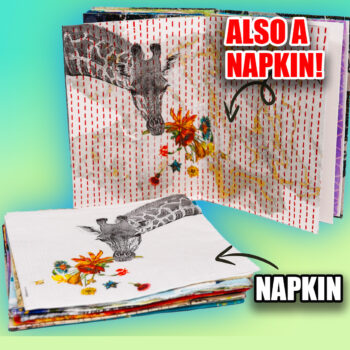
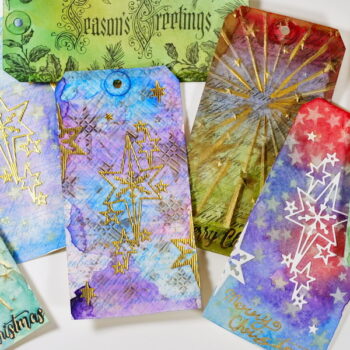

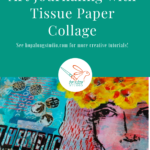
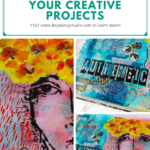
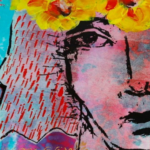
2 Comments
Tommy McDonell
Nice.
I don’t do journals but I do a lot of paintings with collage elements.
However, I want to use faces made of women I made on a Gelli plate on a painting that clay board
And one that is made or 300# paper.
Do I use the same principles done here
Nadine Milton
Hi Tommy, the principle is similar, but you should use a heavier medium when applying to a board. For most of my collage elements for canvas and birch boards I use Gelli prints that are printed on 200 or 300 watercolor paper. I tend to use heavy gel medium to apply them to my boards to make sure that I get solid adhesion. You may want to check out this article about collage/decoupage. I talk about using it in a journal, but the same principle works on a canvas or board. https://hopalongstudio.com/how-to-decoupage-in-an-art-journal/
Let me know if that answers your question!